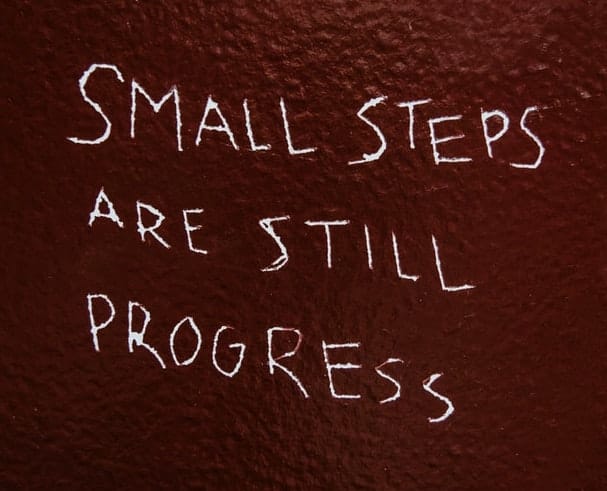Return Gently to the Office - Rebuild Routines Slowly

Can you feel it? We are so close to going “back”. Or are we? Whenever I faced something major that disrupted my normal routines, I’ve found that it takes much longer to get back to “normal”.
That Sudden Jolt
A few years ago, I experienced a shoulder injury. Walking my daughter’s very strong dog and encountering a squirrel on the ground resulted in a lightning-fast tug-of-war. Dog and squirrel came out safe and sound. My shoulder lost the battle though. Later that day, I had a slight pain in my shoulder. I had no idea at the time that it signaled several months of recovery and significant disruption in what I could accomplish.
Somehow, 2020 feels similar. The events of the year yanked our routines away. Many of us felt that we just would wait it out for a few months. No one anticipated over a year of disruption. We had to rebuild our routines in the moment.
That can produce a shock to your system and other systems.

Small Steps to Rebuild
For my shoulder, that sudden jolt resulted in a small tear in my shoulder muscle. The doctor prescribed physical therapy as the best and most rapid way to recover. The doctor made it clear that it would be challenging, but the more I stuck with it, the faster the healing process.
I stuck with this rebuilding process because I wanted to “go back to normal.” It took me nine months of therapy to regain full use of my shoulder. Progress came slow, steady and constant because I stuck to the recovery plan and had expert guidance.
I needed to return gently.
Now, we don’t really have a clear prognosis for our shift from remote work. We really have no idea what the road to recovery looks like nor how long it takes. Each week seems to be a week sideways or backwards depending on the news. Vaccines roll out and some get paused. Some countries move forward. Some have yet to roll out vaccines. Check the new in eastern Europe, Africa, and other less-developed areas.
“Normal” has become a moving and mist-covered target for business anywhere. We need to return gently to the work and the workspace.
If you are familiar with the Cynefin framework, we dance between chaotic and disorder realms these days. It’s impossible for anyone to truly predict cause and effect with the forces of biology, economics, politics, and psychology all raging.
The one thing we can do is take small, fast decisive steps, check the results immediately and determine the next best move in the moment. The Cynefin framework prescribes this act-sense-respond approach when in chaos.

What If You Don’t Know That Next Step?
If you are unsure what your next step will be, seek help.
What kind of help?
Find out how other businesses make small steps to act, sense and respond. In other words, how do they run small experiments to determine what might make things slightly better for customers, staff, the business, how do they measure this progress and how do they decide the “experiment” was successful? Also, how frequently do they reflect and launch the next experiment to navigate this uncertain time?
There are a few options:
- Find a colleague in a similar business either online (LinkedIn anyone?) or through local business networking events.
- Find an old friend that may be a similar role to you (did I mention LinkedIn?).
- If you are in an organization with thousands of employees spread across timezones or countries, are their other groups within your company that seem to be making some progress?
- Do you have any trusted advisors that has helped you or other business devise small, rapid experiments to act-sense-respond? (If not, feel free to contact me or one of my partners.)
What’s next?
Reflection becomes a key skill when “sensing” and I’ll talk about that next.
